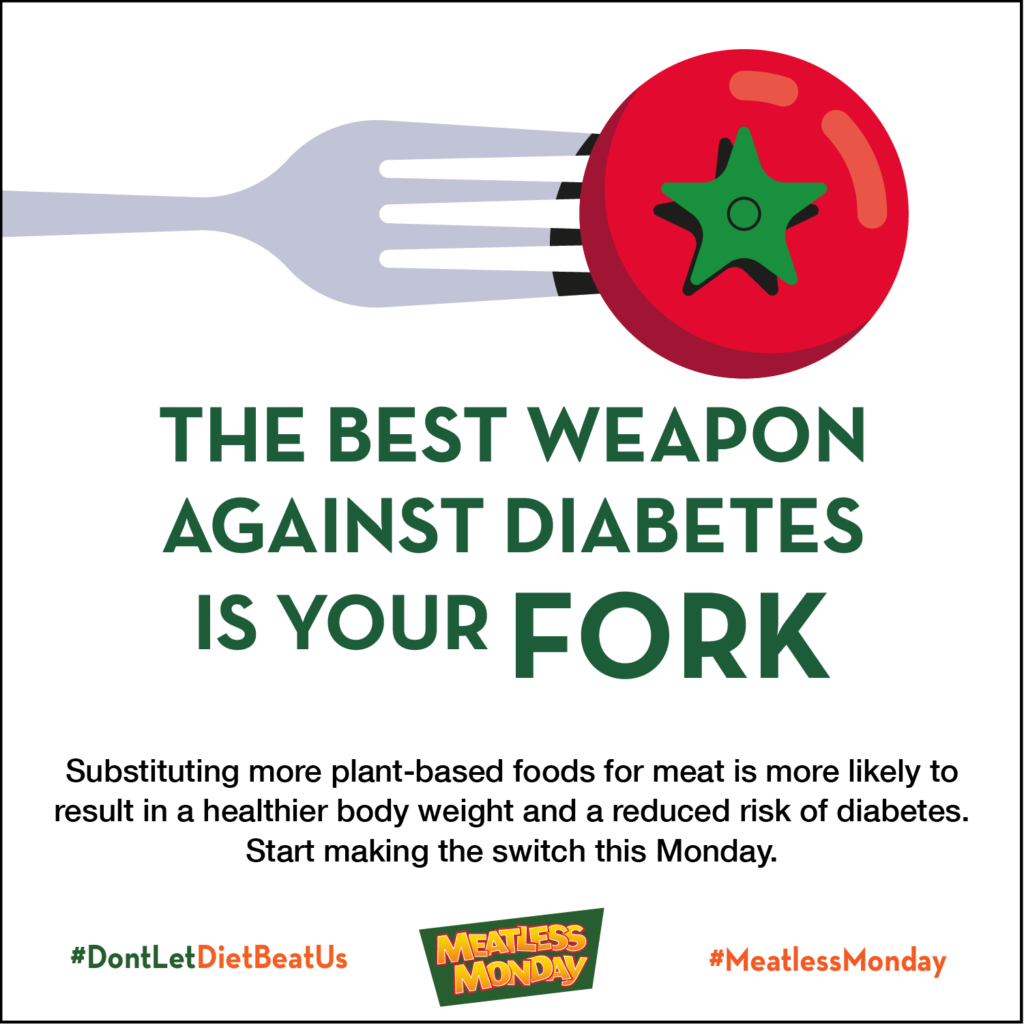Your Diet and Diabetes: What You Need to Know
Chances are you know someone affected by diabetes, a condition that impacts the lives of about 30 million Americans. Approximately one in three American adults has prediabetes — a risk factor for developing type 2 diabetes — and of that population, 90% don’t know they have it.
Think you or a loved one may be at risk? Take (or share) the 60-second American Diabetes Association (ADA) type 2 diabetes risk assessment quiz and find out.
The good news is that most cases of type 2 diabetes are preventable through simple lifestyle changes. The three most important things to do: lose weight, if needed; eat healthy; and be active. Reducing meat and increasing plant-based foods in your diet is one important step in lowering your risk of type 2 diabetes.
This November is Diabetes Awareness Month, so to help make the connection between diet and diabetes, we’ve introduced a new hashtag — #DontLetDietBeatUs – along with social media graphics to to increase awareness of how eating more plant-based foods and less meat can help lower your risk of developing type 2 diabetes. You can also download our new set of creative materials, so you can help spread the word on how a meatless diet can reduce your risk of diabetes.
We’ve also collaborated with our experts at Johns Hopkins Center for a Livable Future to compile a list of eating tips that can help you or a loved one reduce your risk of diabetes.
Incorporate More Plant-Based Food Choices into Your Diet
Substitute red meat with nuts, whole grains, beans, peas, lentils, legumes and other meat alternatives like tofu, and tempeh. Whole grains are especially important, as they are packed with nutrients like selenium, potassium, and magnesium, low in fat, and fiber rich. Additionally, research shows an inverse relationship between whole grains intake and the risk of type 2 diabetes. Don’t forget according to the Dietary Guidelines for Americans, at least half of your grains for the day should be from whole grains.
Make Half Your Plate Fruits and Vegetables
Here are two ideas on how to make it easy: 1) eat seasonally, when produce is fresher and lower cost, and 2) if you can’t find it fresh, frozen fruits and vegetables are picked at peak ripeness and are quickly frozen, preserving their nutrient content and flavor. Buy them when they are on sale and keep a few bags handy for stir fries, soups, quiches, or casseroles, and smoothies.
Choose Heart-Healthy Fats
Use healthy oils for cooking, like canola and olive oil. Nuts, seeds and avocado are good for an afternoon snack and best of all, they’ll keep you full when those mid-afternoon munchies strike.
Limit Fried Foods and other Foods High in Saturated and Trans-Fat
These foods are associated with a high risk of cardiovascular diseases. Saturated fats are found mostly in meats and high fat dairy. Trans-fats are common in processed foods, such as cookies and crackers.
Reduce Intake of Added Sugars
Avoid sugar-sweetened beverages such as juice, soda and energy drinks and sweets such as baked goods, candy, ice cream.
For more information on the relationship between diet and diabetes, click here.
If you’ve already been diagnosed, a couple of extra tips to manage your diabetes:
- Be active all days of the week
- Work with a health professional to manage your diabetes. Remember knowing your ABC (A1C, Blood pressure, and Cholesterol levels) of diabetes is important in helping you manage the disease successfully. To help you understand the A1C test better, click this link on the ADA website.

